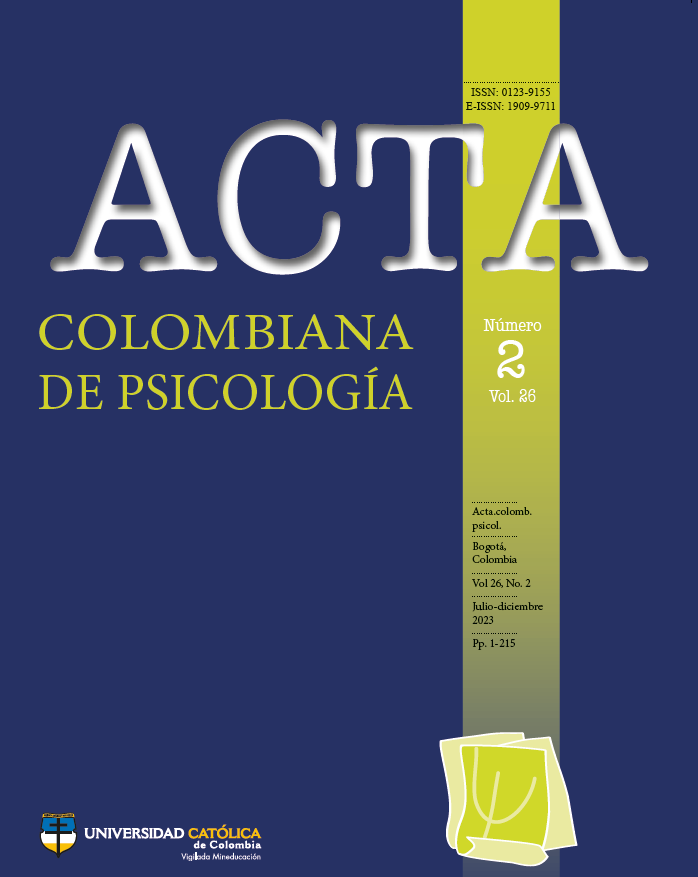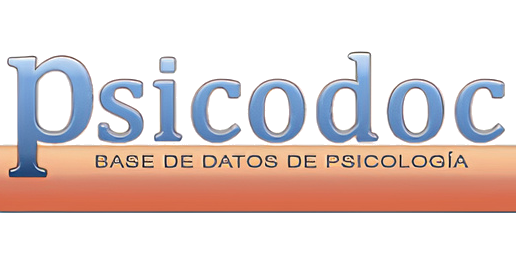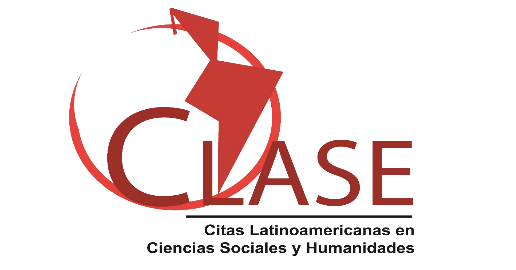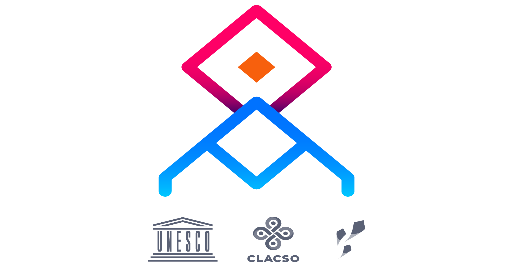
Esta obra está bajo una licencia internacional Creative Commons Atribución-NoComercial-CompartirIgual 4.0.
Los autores que publiquen en esta Revista aceptan las siguientes condiciones:
Acta Colombiana de Psicología se guía por las normas internacionales sobre propiedad intelectual y derechos de autor, y de manera particular el artículo 58 de la Constitución Política de Colombia, la Ley 23 de 1982 y el Acuerdo 172 del 30 de Septiembre de 2010 (Reglamento de propiedad intelectual de la Universidad Católica de Colombia)
Los autores conservan los derechos de autor y ceden a la Revista el derecho de la primera publicación, con el trabajo registrado con la Este obra está bajo una licencia de Creative Commons Reconocimiento-NoComercial-CompartirIgual 4.0 Internacional, que permite a terceros utilizar lo publicado siempre que mencionen la autoría del trabajo y a la primera publicación en esta Revista.
Resumen
La Curiosidad Epistémica (CE) es el deseo que motiva a las personas a adquirir nuevo conocimiento. La escala de CE de Litman fue desarrollada para operacionalizar este constructo, y aunque su estructura latente ha sido validada en varios estudios, estos se han realizado en su mayoría en Alemania, EE. UU y los Países Bajos, que son sociedades educadas, industrializadas, ricas y democráticas. Por consiguiente, el presente estudio evaluó las propiedades psicométricas de la escala de CE, en una muestra de adultos del noroeste de México (N = 334) con edades de 18 a 50 años. Al igual que en investigaciones previas, se compararon dos modelos: unidimensional y bidimensional, mediante análisis factoriales confirmatorios.
Adicionalmente, se incluyeron los residuales correlacionados significativos, como parte de ambos modelos, y se examinó si el instrumento tiene invarianza de medición. Los resultados muestran que el modelo bifactorial presentó el mejor ajuste.
La consistencia interna fue aceptable, y se comprobó que la escala posee invarianza configural, métrica, escalar y estricta.
Usos potenciales de este constructo emergente incluyen su estudio como un factor motivacional relevante, en el nivel de
involucramiento y las estrategias de formación de los estudiantes, así como su papel mediador en varios tipos de ansiedad
en el aprendizaje

Citas
American Educational Research Association, American Psychological Association, & National Council on Measurement in Education. (2014). The Standards for Educational and Psychological Testing. American Educational Research Association; American Psychological Association; National Council on Measurement in Education.
American Psychological Association [apa]. (2020). Guidelines for the practice of telepsychology. American Psychological Association.
Ato, M., López-García, J. J., & Benavente, A. (2013). Un sistema de clasificación de los diseños de investigación en psicología. Anales de Psicología, 29(3), 1038-1059. https://doi.org/10.6018/analesps.29.3.178511
Auerswald, M., & Moshagen, M. (2019). How to determine the number of factors to retain in exploratory factor analysis: A comparison of extraction methods under realistic conditions. Psychological Methods, 24(4), 468-491. https://doi.org/10.1037/met0000200
Bandalos, D. L. (2021). Item meaning and order as causes of correlated residuals in confirmatory factor analysis. Structural Equation Modeling: A Multidisciplinary Journal, 28(6), 903-913. https://doi.org/10.1080/10705511.2021.1916395
Barzilai, S., & Chinn, C. A. (2018). On the goals of epistemic education: Promoting apt epistemic performance. Journal of the Learning Sciences, 27(3), 353-389. https://doi.org/10.1080/10508406.2017.1392968
Berlyne, D. E. (1954). A theory of human curiosity. British Journal of Psychology. General Section, 45(3), 180-191. https://doi.org/10.1111/j.2044-8295.1954.tb01243.x
Bowen, N. K., & Guo, S. (2012). Structural equation modeling. Oxford University Press.
Chalmers, R. P. (2018). On misconceptions and the limited usefulness of ordinal alpha. Educational and Psychological Measurement, 78(6), 1056-1071. https://doi.org/10.1177/0013164417727036
Chen, F. F. (2007). Sensitivity of goodness of fit indexes to lack of measurement invariance. Structural Equation Modeling: A Multidisciplinary Journal, 14(3), 464-504. https://doi.org/10.1080/10705510701301834
Chinn, C. A., Barzilai, S., & Duncan, R. G. (2021). Education for a “post-truth” world: New directions for research and practice. Educational Researcher, 50(1), 51-60. https://doi.org/10.3102/0013189X20940683
DiStefano, C., McDaniel, H. L., Zhang, L., Shi, D., & Jiang, Z. (2019). Fitting large factor analysis models with ordinal data. EducationalandPsychologicalMeasurement, 79(3), 417-436. https://doi.org/10.1177/0013164418818242
Doğan, İ., & Özdamar, K. (2017). The effect of different data structures, sample sizes on model fit measures. Communications in Statistics-Simulation and Computation, 46(9), 7525-7533. https://doi.org/10.1080/03610918.2016.1241409
Domínguez-Lara, S. (2019). Correlation between residuals in confirmatory factor analysis: A brief guide to their use and interpretation. Interacciones. Revista deAvances en Psicología, 5(3), Article e207. https://doi.org/10.24016/2019.v5n3.207
Ferrando, P. J., Hernández-Dorado, A., & Lorenzo-Seva, U. (2022). Detecting correlated residuals in exploratory factor analysis: New proposals and a comparison of procedures. Structural Equation Modeling: A Multidisciplinary Journal, 29(4), 630-638. https://doi.org/10.1080/10705511.2021.2004543
Filzmoser, P., Ruiz-Gazen, A., & Thomas-Agnan, C. (2014). Identification of local multivariate outliers. Statistical Papers, 55(1), 29-47. https://doi.org/10.1007/s00362-013-0524-z
Flora, D. B. (2020). Your coefficient alpha is probably wrong, but which coefficient omega is right? A tutorial on using R to obtain better reliability estimates. Advances in Methods and Practices in Psychological Science, 3(4), 484-501. https://doi.org/10.1177/2515245920951747
Gonzáles-Bueno, J., Calvo-Cidoncha, E., Sevilla-Sánchez, D., Espaulella-Panicot, J., Cordina-Jané, C., & Santos-Ramos, B. (2017). Traducción y adaptación transcultural al español del cuestionario arms para la medida de adherencia en pacientes pluripatológicos. Atención Primaria, 49(8), 459-464. http://dx.doi.org/10.1016/j.aprim.2016.11.008
Heene, M., Hilbert, S., Draxler, C., Ziegler, M., & Bühner, M. (2011). Masking misfit in confirmatory factor análisis by increasing unique variances: A cautionary note on the usefulness of cutoff values of fit indices. Psychological Methods, 16(3), 319-336. https://doi.org/10.1037/a0024917
Heene, M., Hilbert, S., Freudenthaler, H. H., & Bühner, M. (2012). Sensitivity of sem fit indexes with respect to violations of uncorrelated errors. Structural Equation Modeling: A Multidisciplinary Journal, 19(1), 36-50. https://doi.org/10.1080/10705511.2012.634710
Huang, D., Wang, L., Zhou, M., & Zhang, J. (2010). Gender difference in motives of knowledge searching: Measurement invariance and factor mean comparison of the interest/deprivation epistemic curiosity. In 2010 IEEE 2nd Symposium on Web Society (pp. 258-263). IEEE.https://doi.org/10.1109/SWS.2010.5607444
Jorgensen, T. D., Pornprasertmanit, S., Schoemann, A. M., Rosseel, Y., Miller, P., Quick, C., Garnier-Villareal, M., Selig, J., Boulton, A., Preacher, K., Coffman, D., Rhemtulla, M., Robitzsch, A., Enders, C., Arslan, R., Clinton, B., Panko, P., Merkle, E., Chesnut, S., … & Johnson, A. R. (2021). semTools: Useful tools for structural equation modeling (R package version 0.5–5). cran. https://cran.r-project.org/web/packages/semTools/index.html
Kahan, D. M., Landrum, A., Carpenter, K., Helft, L., & Hall Jamieson, K. (2017). Science curiosity and political information processing. Political Psychology, 38, 179-199. https://doi.org/10.1111/pops.12396
Karandikar, S., Kapoor, H., & Litman, J. (2021). Why so curious? Validation and cross-cultural investigation of the Hindi Epistemic Curiosity Scale. Asian Journal of Social Psychology, 24(1), 69-82. https://doi.org/10.1111/ajsp.12425
Kashdan, T. B., & Silvia, P. J. (2009). Curiosity and interest: The benefits of thriving on novelty and challenge. In S. J. Lopez & C. R. Snyder (Eds.), Oxford handbook of positive psychology (pp. 367-374). Oxford University Press.
King-Kallimanis, B. L., Oort, F. J., Nolte, S., Schwartz, C. E., & Sprangers, M. A. (2011). Using structural equation modeling to detect response shift in performance and health-related quality of life scores of multiple sclerosis patients. Quality of Life Research, 20(10), 1527-1540. https://doi.org/10.1007/s11136-010-9844-9
Kline, R. B. (2015). Principles and practice of structural equation modeling (4th Edition). Guilford publications.
Korkmaz, S., Goksuluk, D., & Zararsiz, G. (2014). mvn: An R package for assessing multivariate normality. The R Journal, 6(2), 151-162. https://doi.org/10.32614/RJ-2014-031
Landrum, A. R., Olshansky, A., & Richards, O. (2021). Differential susceptibility to misleading flat earth arguments on Youtube. Media Psychology, 24(1), 136-165. https://doi.org/10.1080/15213269.2019.1669461
Litman, J. (2005). Curiosity and the pleasures of learning: Wanting and liking new information. Cognition & Emotion, 19(6), 793-814. https://doi.org/10.1080/02699930541000101
Litman, J. A. (2007). Curiosity as a feeling of interest and feeling of deprivation: The I/D model of curiosity. In P. R. Zelick (Ed.), Issues in the psychology of motivation (pp. 149-156). Nova Science Publishers.
Litman, J. A. (2008). Interest and deprivation factors of epistemic curiosity. Personality and Individual Differences, 44(7), 1585-1595. https://doi.org/10.1016/j.paid.2008.01.014
Litman, J. (2019). Curiosity: Nature, dimensionality, and determinants. In K. A. Renninger & S. E. Hidi (Eds.), The Cambridge handbook of motivation and learning (pp. 418-442). Cambridge University Press. https://doi. org/10.1017/9781316823279.019
Litman, J. A., & Jimerson, T. L. (2004). The measurement of curiosity as a feeling of deprivation. Journal of Personality Assessment, 82(2), 147-157. https://doi.org/10.1207/s15327752jpa8202_3
Litman, J. A., & Mussel, P. (2013). Validity of the interest and deprivation type epistemic curiosity model in Germany. Journal of Individual Differences, 34(2), 59-68. https://doi.org/10.1027/1614-0001/a000100
Litman, J. A., Crowson, H. M., & Kolinski, K. (2010). Validity of the interest-and deprivation-type epistemic curiosity distinction in non-students. Personality and Individual Differences, 49(5), 531-536. https://doi.or-g/10.1016/j.paid.2010.05.021
Lobato, E., Mendoza, J., Sims, V., & Chin, M. (2014). Examining the relationship between conspiracy theories, paranormal beliefs, and pseudoscience acceptance among a university population. Applied CognitivePsychology, 28(5), 617-625. https://doi.org/10.1002/acp.3042
Loewenstein, G. (1994). The psychology of curiosity: A review and reinterpretation. Psychological Bulletin, 116(1), 75-98. https://doi.org/10.1037/0033-2909.116.1.75
McNeish, D. (2018). Thanks coefficient alpha, we’ll take it from here. Psychological Methods, 23(3), 412-433. https://doi.org/10.1037/met0000144
McNeish, D., & Wolf, M. G. (2021). Dynamic fit index cutoffs for confirmatory factor analysis models. Psychological Methods. Advance online publication. https://doi.org/10.1037/met0000425
Molina, M. D., Wang, J., Sundar, S. S., Le, T., & DiRusso, C. (2022). Reading, commenting and sharing of fake news: Howonlinebandwagonsandbotsdictateuserengagement. Communication Research, Article 00936502211073398. https://doi.org/10.1177/00936502211073398
Mosleh, M., Pennycook, G., Arechar, A. A., & Rand, D. G. (2021). Cognitive reflection correlates with behavior on Twitter. Nature Communications, 12(1), 1-10. https://doi.org/10.1038/s41467-020-20043-0
Orona, G. A., & Pritchard, D. (2022). Inculcating curiosity: Pilot results of an online module to enhance undergraduate intellectual virtue. Assessment & Evaluation in Higher Education, 47(3), 375-389. https://doi.org/10.1080/02602938.2021.1919988
Pascual-Ferrá, P., & Beatty, M. J. (2015). Correcting internal consistency estimates inflated by correlated item errors. Communication Research Reports, 32(4), 347-352. https://doi.org/10.1080/08824096.2015.1089858
Piotrowski, J. T., Litman, J. A., & Valkenburg, P. (2014). Measuring epistemic curiosity in young children. Infant and Child Development, 23(5), 542-553. https://doi.org/10.1002/icd.1847
Putnick, D. L., & Bornstein, M. H. (2016). Measurement invariance conventions and reporting: The state of the art and future directions for psychological research. Developmental Review, 41, 71-90. https://doi.org/10.1016/j.dr.2016.06.004
Reyes-Sosa, H., & Molina-Coloma, V. (2018). Análisis psicométrico de una escala para medir el miedo al delito en jóvenes ecuatorianos. Acta colombiana de Psicología, 21(1), 290-299. https://doi.org/10.14718/ACP.2018.21.1.13
Rosseel, Y. (2012). Lavaan: An R Package for structural equation modeling. Journal of Statistical Software, 48(2), 1-36. https://doi.org/10.18637/jss.v048.i02
Rutkowski, L., & Svetina, D. (2014). Assessing the hypothesis of measurement invariance in the context of large-scale international surveys. Educational and Psychological Measurement, 74(1), 31-57. https://doi.org/10.1177/0013164413498257
Sánchez-Villena, A. R., Cedrón, E. F., De-la-Fuente-Figuerola, V., & Chávez-Ravines, D. (2022). Estructura factorial y datos normativos del Inventario de Depresión de Beck (BDI-II) en población general peruana. Acta Colombiana de Psicología, 25(2), 158-170. https://doi.org/10.14718/ACP.2022.25.2.10
Sarstedt, M., Bengart, P., Shaltoni, A. M., & Lehmann, S. (2018). The use of sampling methods in advertising research: A gap between theory and practice. International Journal of Advertising, 37(4), 650-663. https://doi.org/10.1080/02650487.2017.1348329
Sellbom, M., & Tellegen, A. (2019). Factor analysis in psychological assessment research: Common pitfalls and recommendations. Psychological Assessment, 31(12), 1428-1441. https://doi.org/10.1037/pas0000623
Shi, D., Maydeu-Olivares,A.,& Rosseel,Y. (2020).Assessing fit in ordinal factor analysis models: srmr vs. rmsea. Structural Equation Modeling: A Multidisciplinary Journal, 27(1), 1-15. https://doi.org/10.1080/10705511.2019.1611434
Sideridis, G. D., & Jaffari, F. (2022). An R function to correct fit indices and omnibus tests in confirmatory factor analysis. Measurement and Evaluation in Counseling and Development, 55(1), 48-70. https://doi.org/10.1080/07481756.2021.1906159
Sierra, F. A., Sánchez, R., & Ibáñez, C. (2013). Adaptación transcultural de la escala Daily Spiritual Experience Scale para su uso en Colombia. Revista Colombiana de Cancerología, 17(4), 149-157. https://doi.org/10.1016/S0123-9015(13)70162-8
Smaldino, P. E., Lukaszewski,A., Von Rueden, C., & Gurven, M. (2019). Niche diversity can explain cross-cultural differences in personality structure. Nature Human Behaviour, 3(12), 1276-1283. https://doi.org/10.1038/s41562-019-0730-3
Sociedad Mexicana de Psicología. (2010). Código ético del psicólogo. Trillas.
Streiner, D. l., & Norman G. R. (2008). Health measurement scales. A practical guide to their development and use. Oxford University Press.
Van de Schoot, R., Lugtig, P., & Hox, J. (2012). A checklist for testing measurement invariance. European Journal of Developmental Psychology, 9(4), 486-492. https://doi.org/10.1080/17405629.2012.686740
Verhulst, B., & Neale, M. C. (2021). Best practices for binary and ordinal data analyses. Behavior Genetics, 51(3), 204-214. https://doi.org/10.1007/s10519-020-10031-x
Wahl, A. K., Hermansen, Å., Tschamper, M. B., Osborne, R. H., Helseth, S., Jacobsen, R., & Larsen, M. H. (2022). The Parent Health Literacy Questionnaire (HLQ-Parent). Adaptation and validity testing with parents of children with epilepsy. Scandinavian Journal of Public Health, Article 14034948221123436. https://doi.org/10.1177/14034948221123436
Wootton, A. R., Rice, D. R., McKowen, A. L. W., & Veldhuis, C. (2022). A mixed-methods and prospective approach to understanding coping behaviors, depression, hopelessness, and acute stress in a us convenience sample during the covid-19 pandemic. Health Education & Behavior, 49(2), 219-230. https://doi.org/10.1177/10901981221084272
Xia, Y., & Yang, Y. (2019). RMSEA, CFI, and TLI in structural equation modeling with ordered categorical data: The story they tell depends on the estimation methods. Behavior Research Methods, 51(1), 409-428. https://doi.org/10.3758/s13428-018-1055-2
Zhang, Y., Zhou, M., Shao, Y., & Zhang, M. Y. (2020). mv-normal Test: Powerful Tests for Multivariate Normality. cran. https://CRAN.R-project.org/package=mvnormalTest


































